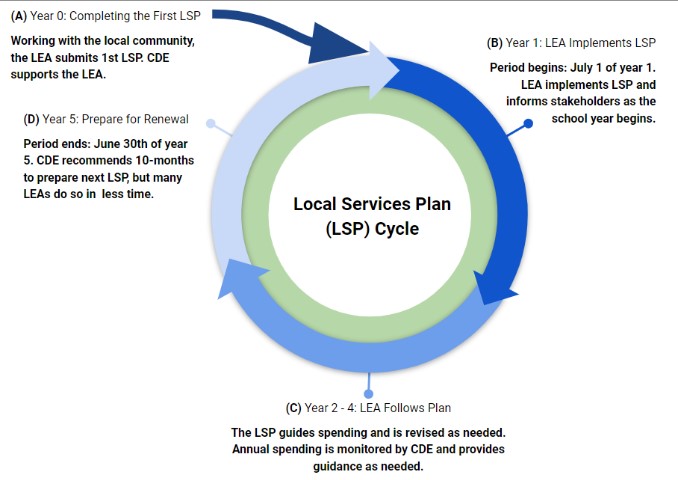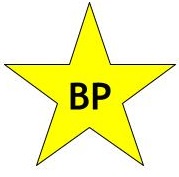1.1 Overview
| Site: | Colorado Education Learning Management System |
| Course: | CDE School Health Services (SHS) Program Learning Tool |
| Book: | 1.1 Overview |
| Printed by: | Guest user |
| Date: | Monday, 15 December 2025, 6:31 AM |
Description
Use the "Next" and "Previous" buttons below to move to the next or previous chapter in this module OR
Use the table of contents on the right to navigate to a chapter in this module.
Context & Background
In 1997, the Colorado General Assembly passed legislation that authorizes public school districts, Boards of Cooperative Education Services, and state K-12 educational institutions to provide health services to children by using reimbursed Medicaid funds.
The intent of this legislation is to:
- Support and enhance local school health programs
- Increase access to preventive and primary health care services for low-income, uninsured, and underinsured children
- Improve care coordination between schools and health care providers
The program has two different and exclusive components; receiving reimbursements from the federal government for providing Individualized Education Plan (IEP) health services to Medicaid enrolled students and using these funds health services to all students. The statute allows districts to be reimbursed through federal matching funds for IEP health services provided by Medicaid qualified providers to Medicaid eligible students during school hours. Matching funds are required to be used to enhance health services for all children. Funds are intended to enhance, expand, or support the availability of health services to students. The legislation allows for up to 30% of these reimbursed funds to be used for initiatives to increase access to health care for low-income students.
In December 2014 Centers for Medicare and Medicaid Services (CMS) reversed their decision of not allowing Free Care (services provided to Medicaid enrolled students at no charge, and/or provided to the community at large free of charge) to be reimbursed. This reversal means Medicaid eligible services provided to enrolled students are available for reimbursement if all other Medicaid requirements are met.
In October 2020 the SHS Program expanded to include program covered services reimbursable to districts and BOCES for Health First Colorado enrolled students with other medical plans of care (outside of IEPs/IFSPs) where medical necessity has been established.
To receive Medicaid reimbursement, each school district/BOCES which enters into a contract with HCPF on behalf of the state of Colorado must:
- Assess the health care needs of its students, including an assessment of the needs of uninsured and underinsured students
- Obtain and incorporate community input to establish health priorities
- Develop an LSP according to guidelines issued by the Colorado Department of Health Care Policy and Financing (HCPF) and the Colorado Department of Education (CDE)
Required elements of the plan are covered in detail in subsequent portions of this section. In general, they include:
- Determining the health needs of students, including a targeted needs assessment for uninsured and underinsured students
- Soliciting input from members of the community to determine local health needs via:
- School Health Advisory Committee with cross section of community members
- Survey sent to principals, mental health providers, parents, public health Healthy Communities staff, public health registered nurses, homeless services, community-based healthcare providers and other community-based advocacy groups
- Determining the amount of reimbursement available from HCPF Cost Reconciliation Report
- Community partners prioritizing health needs as determined by needs assessment
- Describing and listing the health services to be provided based on community input and needs assessment
- Describing how funds will be allocated for these health services as determined by community partners
- Establishing procedures for monitoring and reporting the delivery of these health services
The Local Services Plan is an important document that requires recreation every five years. LEAs have the option to revise as needed during this period. Periodic reviews ensure that the health services provided remain relevant and responsive to the needs of the local community.
The 5-Year Plan Life Cycle
Use the diagram below for a general understanding of the LSP lifecycle from creating a brand new LSP, to closing out the same LSP and starting a new one. Each step in the LSP process is further explained below the diagram.

(A) Year 0: In order to participate in the program, LEAs must submit a Local Services Plan (LSP). For new LEAs, this means that they must obtain and incorporate community input in order to establish the health priorities in the LSP. They must also assess the health care needs of its students, including an assessment of the needs of uninsured and underinsured students. This information will be used with the LEA’s student health advisory committee leading the creation of the LSP to select the health services that will receive Medicaid reimbursement funds and to create LSP goals/objectives. During this process, the CDE SHS Consultant will act as support and provide necessary guidance.
(B) Year 1: Once the LSP is finalized, it is submitted in June for review. If approved, it will be active July 1 that same year. At this point, the LEA will begin LSP implementation and should inform community stakeholders as needed. If this is the first year of LEA participation in the program, they will receive additional mentorship and support to ensure compliance with the program and timely submission of deliverables like the Reimbursement Spending Report (RSR) to CDE.
(C) Year 2-4: From years 2-4, the LEA will continue to spend according to the LSP, submit necessary deliverables, and review their LSP as needed. Every year, the LEA will submit their RSR deliverable. This report will be reviewed and compared with the LSP to ensure spending is aligned with the plan on file with CDE. The CDE SHS Consultant will reach out if an LSP revision may be needed.
 |
It is best practice to review your LSP quarterly and adjust via LSP revision if needed. Email the CDE SHS Consultant to start this process. Remember, there are no limits to the number of LSP revision requests, but make sure revisions align with the community identified health priorities. |
|---|
(D) Year 5: At the start of the 5th and final year of the plan, LEAs will receive an email with an updated template and LSP guidelines. The time recommendation for new LSPs is 10-months. At this point, the LEA Medicaid coordinator will begin the process of creating a new LSP, which includes the steps outlined in (A), and the LSP cycle continues.
 | LEAs may find it helpful to begin the creation of a new LSP by reviewing the expiring LSP. This is an advantage not afforded to new LEAs without a plan in place. |
|---|
Plan Submission Timeline & Requirements
For a complete submission, an LEA must submit the following items to CDE:
- A completed Local Services Plan
- A signed Part V Assurances form
Since plans expire every five years, LEAs are grouped into cohorts by start and end time of their LSPs. All Local Services Plans (LSPs) begin on July 1st of the first year and end on June 30th of the fifth year. For example, the 2022-27 cohort LSP starts on July 1, 2022, and ends on June 30th, 2027. This also means that a new LSP must be finalized by the deadline on June 30th of the expiring year of the current LSP. An initial submission deadline two-weeks before the final deadline allows LEAs to submit their LSPs early, in order to review and make any necessary edits before the final submission deadline. The initial submission deadline will always be two weeks before the final submission deadline. Therefore, it is important for LEAs to submit their new LSPs on time using the following deadline schedule:
Local Services Plan Submission Deadline
- Initial Submission: June 16th, or the next business day if on a weekend.
- Final Submission: June 30th, or the next business day if on a weekend.
Before submitting your LSP, it may be helpful to ask yourself the following questions:
- Does this LSP accurately reflect the health needs identified by the local community?
- Is there a critical voice missing from this process?
- Are my administrative costs under 20%? If not, remember to check for any items that are more directly related to the provision of health services and should be recategorized.
- Are there any potential unallowable costs in my LSP?
For more information on LSP Cohorts, the current CDE School Health Services Program Timeline, or what LEAs are in what cohorts, visit the CDE program timeline page using the link below.
Visit the School Health Services Program Timeline Page